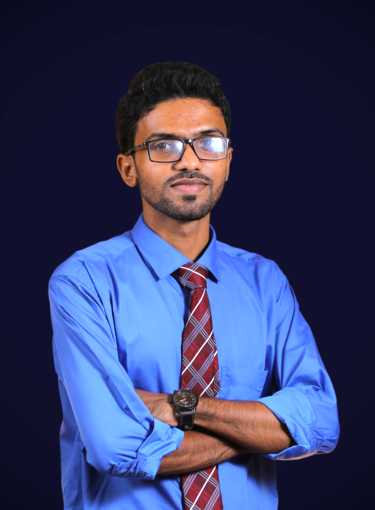

Mr. Purbayan Das
Lecturer
purbayan.das@bracu.ac.bd
Address
CSE Department
4th floor, Room No # 4N140,
Brac University,
Kha 224 Bir Uttam Rafiqul Islam Avenue,
Merul Badda, Dhaka, Bangladesh
Purbayan Das is an enthusiastic educator and researcher who has been a lecturer at BRAC University's Department of CSE since January 2023. He graduated in 2021 with a Bachelor of Science in EEE from Bangladesh University of Engineering and Technology, where he is currently pursuing a Master of Science in the same discipline. His passion for electronics prompted him to do research in the field of nanoelectronics, namely nanophotonics. His research interests include nanophotonics, optoelectronics, and neuromorphic computing, as well as their applications in other fields. He loves to be actively engaged in activities linked to problem-solving and research, constantly stretching the limits of his knowledge and abilities. In addition, he is an avid sports fan who used to regularly compete in hall and departmental sports events during his undergraduate studies. As part of a recent CSE Outdoor Team Building and Workshop, he also participated in a friendly football tournament among coworkers, which his team won.
Purbayan has always had a passion for teaching, and he considers himself fortunate to be able to pursue this passion professionally. He is able to pique his audience's interest in pondering unfamiliar ideas and looking at familiar things in novel ways, that make him well suited for teaching. Driven by his enthusiasm for teaching, he has been regularly producing high quality instructional materials for both teachers and students since joining this university, demonstrating his competence, capacity, and commitment to this profession.
He has honed his leadership skills throughout his school, college, and professional life. As the coordinator for the Circuits and Electronics (CSE250) course, he was given the opportunity to modify the course syllabi to better meet the needs of students. He enjoys playing cricket, football, and badminton in his spare time, as well as traveling and watching movies. As a person, he is best described by intuition, compassion, prospectivity, generosity, and idealism.
Journals
Md. Asif Hossain Bhuiyan, Purbayan Das, and Sajid Muhaimin Choudhury, "Polarization insensitive electrically reconfigurable meta-lens for the 2 µm wavelength," Opt. Mater. Express 14, 2830-2843 (2024). https://doi.org/10.1364/OME.540435
Sarker, A., Mitu, S. A., Das, P., & Choudhury, S. M. (2020). Structurally tunable gear-shaped plasmonic sensor. Optics Express, 28(24), 36070–36083. https://doi.org/10.1364/OE.410123
M.Sc. in Electrical and Electronic Engineering (EEE), Bangladesh University of Engineering and Technology, Dhaka, Bangladesh (2021-Present)
B.Sc. in Electrical and Electronic Engineering, Bangladesh University of Engineering and Technology, Dhaka, Bangladesh (2016-2021)
H.S.C., Govt. City College, Chittagong, Bangladesh (2015)
S.S.C., Nasirabad Govt. Boys School, Chittagong, Bangladesh (2013)

Course Code: | CSE250 CSE250L |
Course Title: | Circuits and Electronics Circuits and Electronics Laboratory |
Credit Hours (Theory+Lab): | 3 + 0 |
Contact Hours (Theory+Lab): | 3 + 3 |
Category: | Program Core |
Type: | Required, Engineering, Lecture + Laboratory |
Prerequisites: | None |
Co-requisites: | None |
Fundamental electrical concepts and measuring units of electrical charge, voltage, current, resistance, and power; Laws of electricity (Ohm's law, Kirchhoff's Current and Voltage law) and various methods of electrical circuit analysis (Nodal, Mesh); Introduction to basic electrical circuit elements; I-V characteristics; Circuit analysis in Direct current, First-order Transient and Alternating current mode, for various combinations of Resistive, Inductive and Capacitive networks; Phasor representation of sinusoidal quantities; Circuit theorems for linear circuits (Source Transformation, Superposition, Thevenin, Norton and Maximum Power Transfer); Open loop and closed loop configuration of Operational Amplifiers.
2. Series and Parallel Configurations
3. KCL and KVL
4. I-V Characteristics of Linear Circuits
9. Thevenin's Theorem and Norton's Theorem
10. Maximum Power Transfer Theorem
11. First Order Transient Circuits
12. AC Fundamentals, AC Circuits, and AC Power Analysis
Accepting
As: |
Co-supervisor |
Level: |
Undergraduate |
Type: |
|
Research Interests: